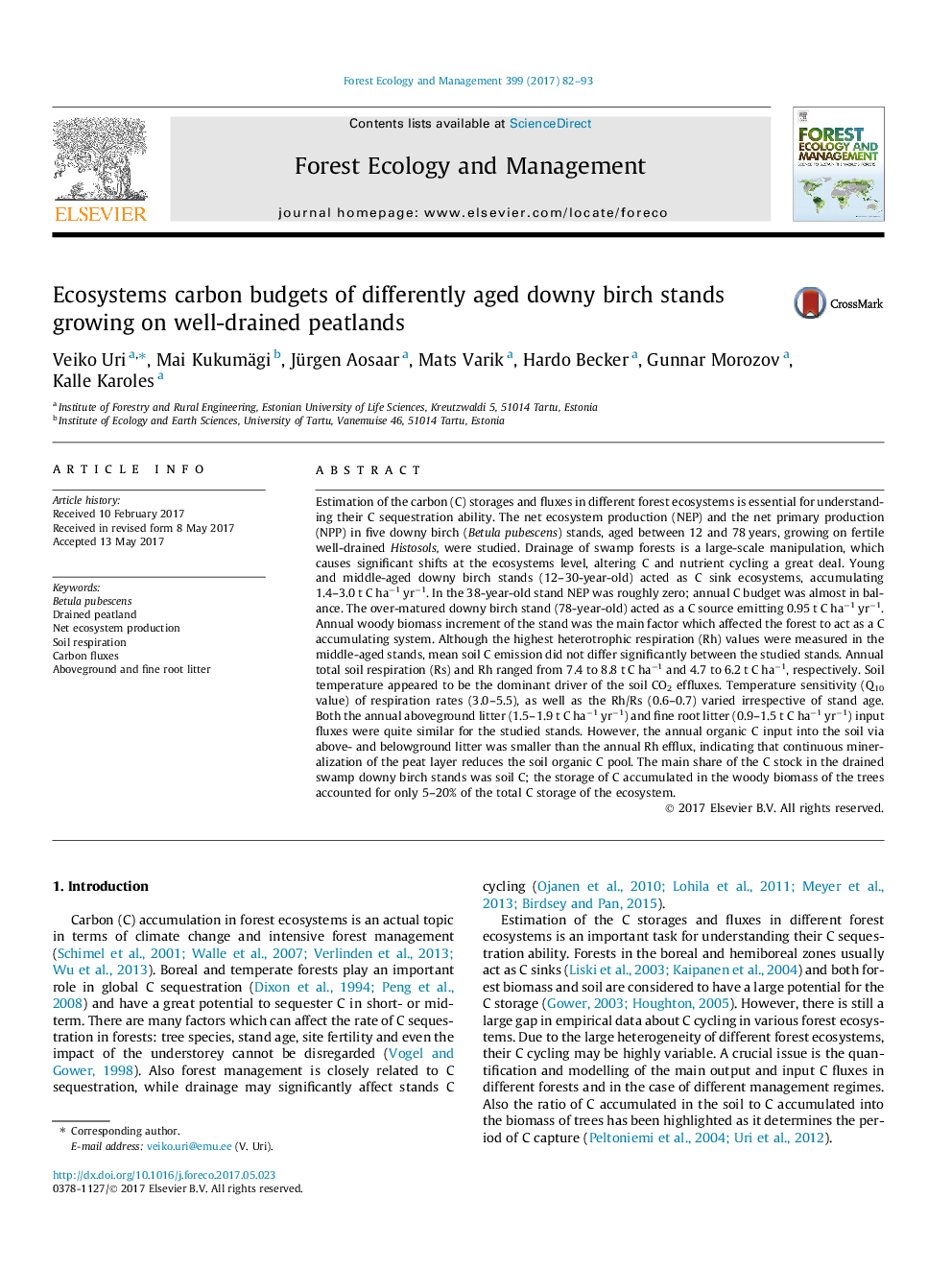| کد مقاله | کد نشریه | سال انتشار | مقاله انگلیسی | نسخه تمام متن |
|---|---|---|---|---|
| 4759370 | 1421359 | 2017 | 12 صفحه PDF | دانلود رایگان |
عنوان انگلیسی مقاله ISI
Ecosystems carbon budgets of differently aged downy birch stands growing on well-drained peatlands
ترجمه فارسی عنوان
بودجه های کربن اکوسیستم های مختلف درختچه های نر بالغ در حال رشد در زمین های زراعی خوب است
دانلود مقاله + سفارش ترجمه
دانلود مقاله ISI انگلیسی
رایگان برای ایرانیان
کلمات کلیدی
موضوعات مرتبط
علوم زیستی و بیوفناوری
علوم کشاورزی و بیولوژیک
بوم شناسی، تکامل، رفتار و سامانه شناسی
چکیده انگلیسی
Estimation of the carbon (C) storages and fluxes in different forest ecosystems is essential for understanding their C sequestration ability. The net ecosystem production (NEP) and the net primary production (NPP) in five downy birch (Betula pubescens) stands, aged between 12 and 78 years, growing on fertile well-drained Histosols, were studied. Drainage of swamp forests is a large-scale manipulation, which causes significant shifts at the ecosystems level, altering C and nutrient cycling a great deal. Young and middle-aged downy birch stands (12-30-year-old) acted as C sink ecosystems, accumulating 1.4-3.0 t C haâ1 yrâ1. In the 38-year-old stand NEP was roughly zero; annual C budget was almost in balance. The over-matured downy birch stand (78-year-old) acted as a C source emitting 0.95 t C haâ1 yrâ1. Annual woody biomass increment of the stand was the main factor which affected the forest to act as a C accumulating system. Although the highest heterotrophic respiration (Rh) values were measured in the middle-aged stands, mean soil C emission did not differ significantly between the studied stands. Annual total soil respiration (Rs) and Rh ranged from 7.4 to 8.8 t C haâ1 and 4.7 to 6.2 t C haâ1, respectively. Soil temperature appeared to be the dominant driver of the soil CO2 effluxes. Temperature sensitivity (Q10 value) of respiration rates (3.0-5.5), as well as the Rh/Rs (0.6-0.7) varied irrespective of stand age. Both the annual aboveground litter (1.5-1.9 t C haâ1 yrâ1) and fine root litter (0.9-1.5 t C haâ1 yrâ1) input fluxes were quite similar for the studied stands. However, the annual organic C input into the soil via above- and belowground litter was smaller than the annual Rh efflux, indicating that continuous mineralization of the peat layer reduces the soil organic C pool. The main share of the C stock in the drained swamp downy birch stands was soil C; the storage of C accumulated in the woody biomass of the trees accounted for only 5-20% of the total C storage of the ecosystem.
ناشر
Database: Elsevier - ScienceDirect (ساینس دایرکت)
Journal: Forest Ecology and Management - Volume 399, 1 September 2017, Pages 82-93
Journal: Forest Ecology and Management - Volume 399, 1 September 2017, Pages 82-93
نویسندگان
Veiko Uri, Mai Kukumägi, Jürgen Aosaar, Mats Varik, Hardo Becker, Gunnar Morozov, Kalle Karoles,
